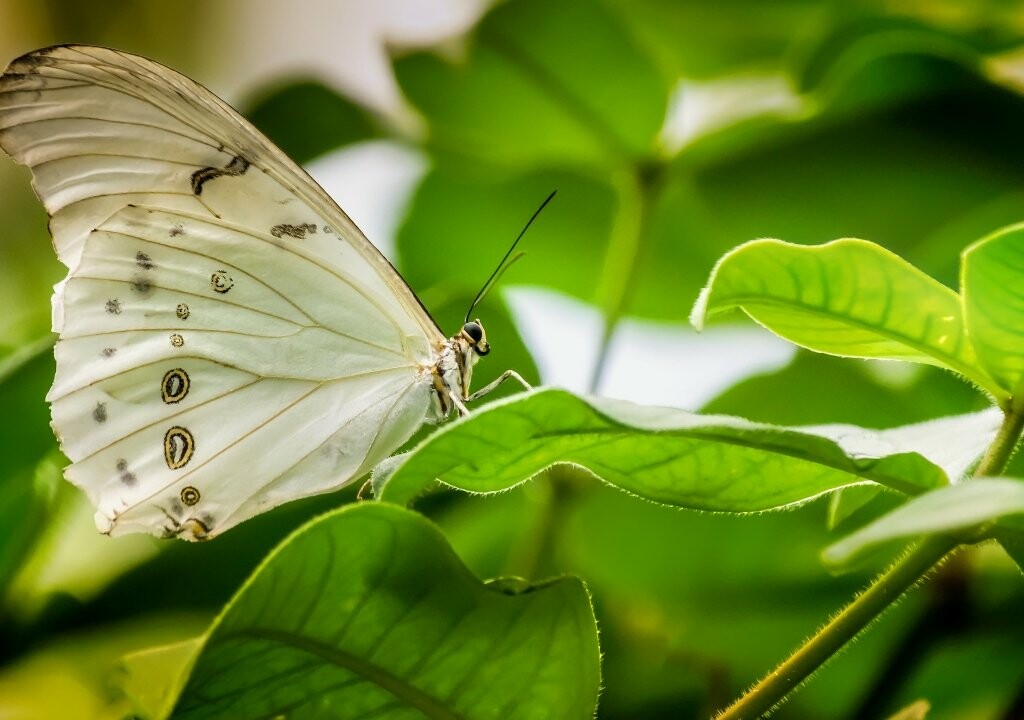White butterflies, symbols of transformation and purity, have fascinated humanity for centuries. Through history and folklore, as well as in contemporary scientific studies, they emerge as a bridge between the natural and spiritual worlds.
White Butterflies: Messengers of Hope and Transformation
In many cultures, white butterflies represent peace, transformation and purity. For example, in Greek mythology, it was believed that the souls of the dead transformed into white butterflies. This symbolism reflected the immortality of the soul and its journey toward spiritual freedom. This vision of the butterfly as a symbol of the human psyche has endured through the centuries, adapting and evolving in different cultural contexts.
In Chinese culture, they are associated with immortality and longevity. According to popular beliefs, the souls of the deceased take the form of white butterflies to travel to the afterlife, carrying messages of love and hope to loved ones left behind. This vision reinforces the idea that white butterflies act as messengers between the physical and spiritual worlds.
Native American cultures see butterflies, including white ones, as symbols of positive change and spiritual transformation. The appearance of a white butterfly can bring blessings and good fortune. Additionally, these butterflies are believed to herald wet or warm seasons, highlighting their connection to natural cycles and weather prediction.
Superstitions and Popular Beliefs About White Butterflies
Surrounded by superstitions and popular beliefs, they have meanings that vary significantly depending on the region. In some cultures, their presence is considered auspicious and a harbinger of happiness and good luck. For example, in certain South American communities, the first white butterfly seen in summer signals the arrival of a wet season.
However, not all superstitions are positive. In places like Maryland, it is believed that the arrival of a white butterfly at home foretells death. This contrast in interpretations demonstrates how the same symbol can have diametrically opposed meanings depending on the cultural context.
Behavior and Habitat of White Butterflies
Common in various parts of the world, white butterflies are found from flower-filled fields and urban gardens to tropical forests. Their presence varies by region and climate, but they are always welcomed as signs of beauty and transformation. In areas with warm and temperate climates, where numerous species of plants that attract these creatures flourish, they are particularly appreciated.
The life cycle of these butterflies, which includes the stages of egg, caterpillar, chrysalis and finally butterfly, is a fascinating process that symbolizes metamorphosis and spiritual evolution. This cycle reflects the transformative ability of butterflies and serves as a powerful metaphor for change and renewal in human life.
Scientific Research
Scientific research has discovered that white butterflies play a crucial role in pollination and maintaining biodiversity. Their life cycle, from the caterpillar stage to the cocoon and finally the butterfly, symbolizes metamorphosis and spiritual evolution. Moreover, their ability to adapt to diverse environments makes them important indicators of ecological health.
Studies have shown that white butterflies are essential for the pollination of many plants. Their presence in an ecosystem can indicate a healthy and well-balanced environment. On the other hand, white butterflies are highly sensitive to environmental changes, making them useful bioindicators for scientists studying the effects of climate change and habitat degradation.
White Butterflies in Art and Literature
Through the centuries, white butterflies have been a source of inspiration in art and literature. Their delicate beauty and profound symbolism have captured the imagination of poets, writers and artists from various eras and cultures. In literature, they often symbolize purity, hope and transformation.
In visual art, they are frequently depicted in paintings and sculptures as symbols of ephemeral beauty and the fragility of life. Their presence in works of art can invoke a sense of peace and serenity, as well as a reflection on the transitory nature of human existence.
White Butterflies in Popular Culture
In modern popular culture, they continue to be powerful symbols of hope and renewal. They appear in tattoos, jewelry and home decorations, where their symbolism continues to resonate with many people. White butterfly tattoos, for example, are popular among those seeking to symbolize a new beginning or personal transformation.
Additionally, white butterflies are common in film and television, where they often represent the connection between the physical and spiritual worlds. Their appearance in key scenes can underscore moments of significant change or spiritual revelation for characters.
Importance of Preserving White Butterflies
As the world faces environmental challenges, white butterflies remind us of the delicate beauty and importance of preserving nature. Their symbolism and role in ecosystems highlight the need to protect these fragile beings. They are particularly vulnerable to habitat loss and the effects of climate change, underscoring the importance of conservation efforts.
Initiatives to preserve white butterflies and their habitats include creating butterfly-friendly gardens, protecting natural areas and promoting sustainable agricultural practices. These efforts not only benefit butterflies but also help maintain biodiversity and the ecological health of ecosystems in general.
Final Conclusion
As the world faces environmental challenges, white butterflies remind us of the delicate beauty and importance of preserving nature. Their symbolism and role in ecosystems highlight the need to protect these fragile beings. As messengers of hope and transformation, they continue to inspire generations, reminding us that in nature, as in our lives, there is always room for rebirth and evolution.
In an increasingly changing world, white butterflies invite us to reflect on our own personal and spiritual transformations, providing a message of hope and renewal. By preserving and protecting these wonderful creatures, we not only ensure their survival but also embrace the values of peace, purity and transformation that they symbolize.





